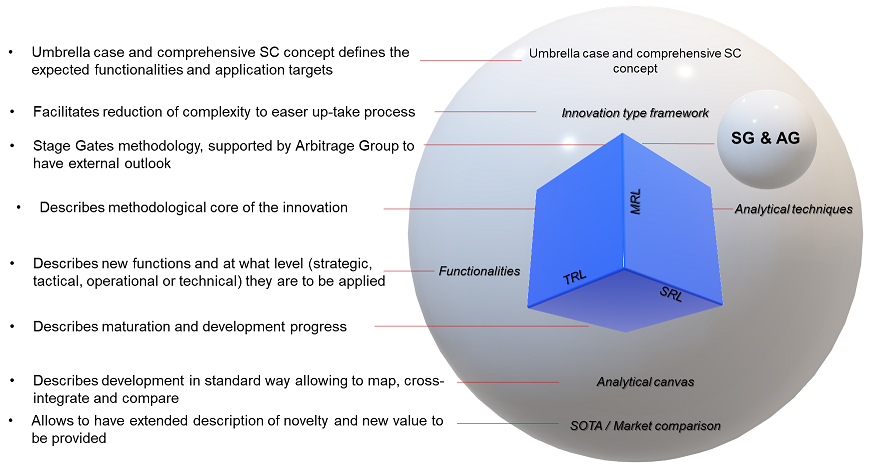Innovation governance based on the diversity of factors that Shaped the Development of the SPARTA T-SHARK Program
22nd Nov 2020
T-SHARK aims to develop and validate methodological, organisational and technological solutions, thereby extending cybersecurity in order to achieve a comprehensive organisation of security functions that focus on threat prediction and full-spectrum cybersecurity awareness, providing high situational awareness and timely warning of threats. Significantly, T-SHARK and 19 of its partners have focused their primary efforts on the question of delivering full-spectrum cybersecurity awareness with the goal of informing decision and policymakers on broad, long-term issues.
Activities within the Program have been divided into two main streams.
The first deals with several technology-based developments identified by separate partners or joint teams (defined as Sub-cases). These teams engage in information exchange, develop solutions based on data gathering activities and development of visual analytics capabilities that enable the integration of outputs arising from Sub-cases.
The second stream is dedicated to supporting the activities associated with Sub-cases, including legal support such as legal assessments, but primarily in supporting the governance activities of Sub-cases, which are meant to demonstrate value-added in the Umbrella Case, Elections Interference, resulting in increased integrity of program governance.
Supportive governance activities, as well as all activities in T-SHARK, are coordinated by L3CE (Lithuanian Cyber Crime Center of Excellence for Training, Research and Education).
The initial methodology of Stage Gates was borrowed from a standard business practice used to manage innovation development and product or service portfolios. The methodology focuses on the identification of requirements for competing teams, intermediate and final criteria for evaluation of teams, and involvement of societal and associated partners. Indeed, competition is an important aspect of the methodology. In competing through the Gates, some teams are successful; but those that fail are not supported further. The Stage Gates methodology also includes the activities of an Arbitrage Group, which consists of recognised experts from relevant stakeholder groups (industry, end-users, academia, policymakers) who are able to evaluate Sub-case activity according to established criteria and provide valuable feedback.
During Project rollout, all Sub-cases provided descriptions of their development following a pre-defined format. At this point, Sub-cases displayed their differing natures and could have been evaluated as completely separate projects as, for example, in displaying different TRL levels (some being at the conceptual level, whereas others had working prototypes, ready for demonstration).
During the first Stage Gates event, all Sub-cases presented their results, and the Arbitrage Group provided their feedback, but at this point, the competition aspect was deemed to be inappropriate.
This Stage Gates event was evaluated positively by all participants. It also provided significant insights and questions to be addressed. The main lessons learned included organisational aspects of the event and involvement of the Arbitrage Group. It also demonstrated that the methodology applied is a useful instrument in governing innovative developments but needs more work to be fully effective.
In addition, the event clearly indicated that developments within T-SHARK alone are not able to provide all the necessary components required for a comprehensive Cyber Security. It would be worth including a wider selection of solutions developed by other projects or industry to make the whole picture more complete.
Based on this experience, a major assessment of supportive activities was undertaken. This mainly focused on improved innovation governance, taking into account the fact that the methodology of Stage Gates and application of TRL evaluations are suitable, but not exhaustive.
Apart from the introduction of new instruments (individual Sub-case reviews, cross-integration workshops, on-boarding of other projects), building the model for innovation management became the core of supportive activities. Indeed, innovation management, a vibrant subject for academia and practitioners, gave rise to wide-ranging discussions; as did innovation governance and management, which are especially relevant for policymakers who need to affect the efficiency of resource allocation.
While scoping the innovations governance model, each responsible team focuses on several key aspects:
- Description of innovative developments. As technology-based developments and integration opportunities need to be understood by external stakeholders and potential users, they should be described in a unified format. The analytical canvas model is one of the options currently included in the model.
- Measuring of innovative development performance. Searching for relevant KPI’s, which can assess the potential of the development and provide clear evaluation measures for external evaluators.
- Maturation of innovative developments. TRL methodology should be complemented with other instruments (e.g. SRL, MRL, etc.) to provide more comprehensive tracking of progress.
- Mapping of innovative developments. Seeing the contributions of different initiatives to the endpoint case or concept requires application of several selected frameworks (e.g. fit to the Umbrella case process, main functionalities provided, analytical techniques applied, etc.).
- Integration of individual developments. In most cases, the achievements of the project will lead to the integration of components into a higher-level architecture. Thus, early-stage integrity assessment and level of innovation will be a mandatory part of the model.
The initial T-SHARK governance model comprehensively aggregates the aspects mentioned above:

In the upcoming period, the T-SHARK Program will focus on fine-tuning the primary model and piloting it with the Sub-cases. A comprehensive methodology to be used within SPARTA is expected by the end of 2021. This will sustain the network, providing additional insights and new concepts for further research.
